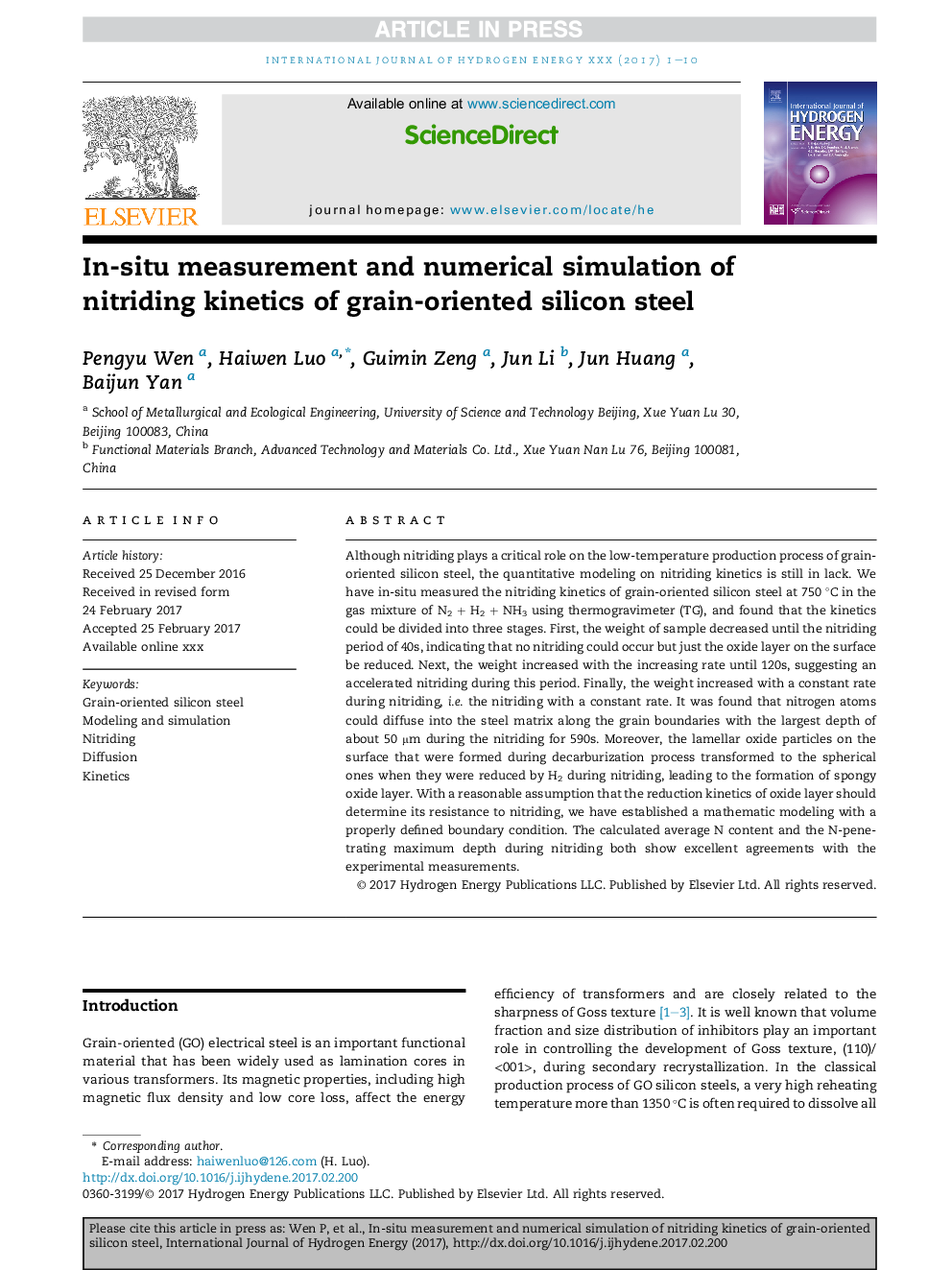| Article ID | Journal | Published Year | Pages | File Type |
|---|---|---|---|---|
| 5145697 | International Journal of Hydrogen Energy | 2017 | 10 Pages |
Abstract
Although nitriding plays a critical role on the low-temperature production process of grain-oriented silicon steel, the quantitative modeling on nitriding kinetics is still in lack. We have in-situ measured the nitriding kinetics of grain-oriented silicon steel at 750 °C in the gas mixture of N2 + H2 + NH3 using thermogravimeter (TG), and found that the kinetics could be divided into three stages. First, the weight of sample decreased until the nitriding period of 40s, indicating that no nitriding could occur but just the oxide layer on the surface be reduced. Next, the weight increased with the increasing rate until 120s, suggesting an accelerated nitriding during this period. Finally, the weight increased with a constant rate during nitriding, i.e. the nitriding with a constant rate. It was found that nitrogen atoms could diffuse into the steel matrix along the grain boundaries with the largest depth of about 50 μm during the nitriding for 590s. Moreover, the lamellar oxide particles on the surface that were formed during decarburization process transformed to the spherical ones when they were reduced by H2 during nitriding, leading to the formation of spongy oxide layer. With a reasonable assumption that the reduction kinetics of oxide layer should determine its resistance to nitriding, we have established a mathematic modeling with a properly defined boundary condition. The calculated average N content and the N-penetrating maximum depth during nitriding both show excellent agreements with the experimental measurements.
Related Topics
Physical Sciences and Engineering
Chemistry
Electrochemistry
Authors
Pengyu Wen, Haiwen Luo, Guimin Zeng, Jun Li, Jun Huang, Baijun Yan,
